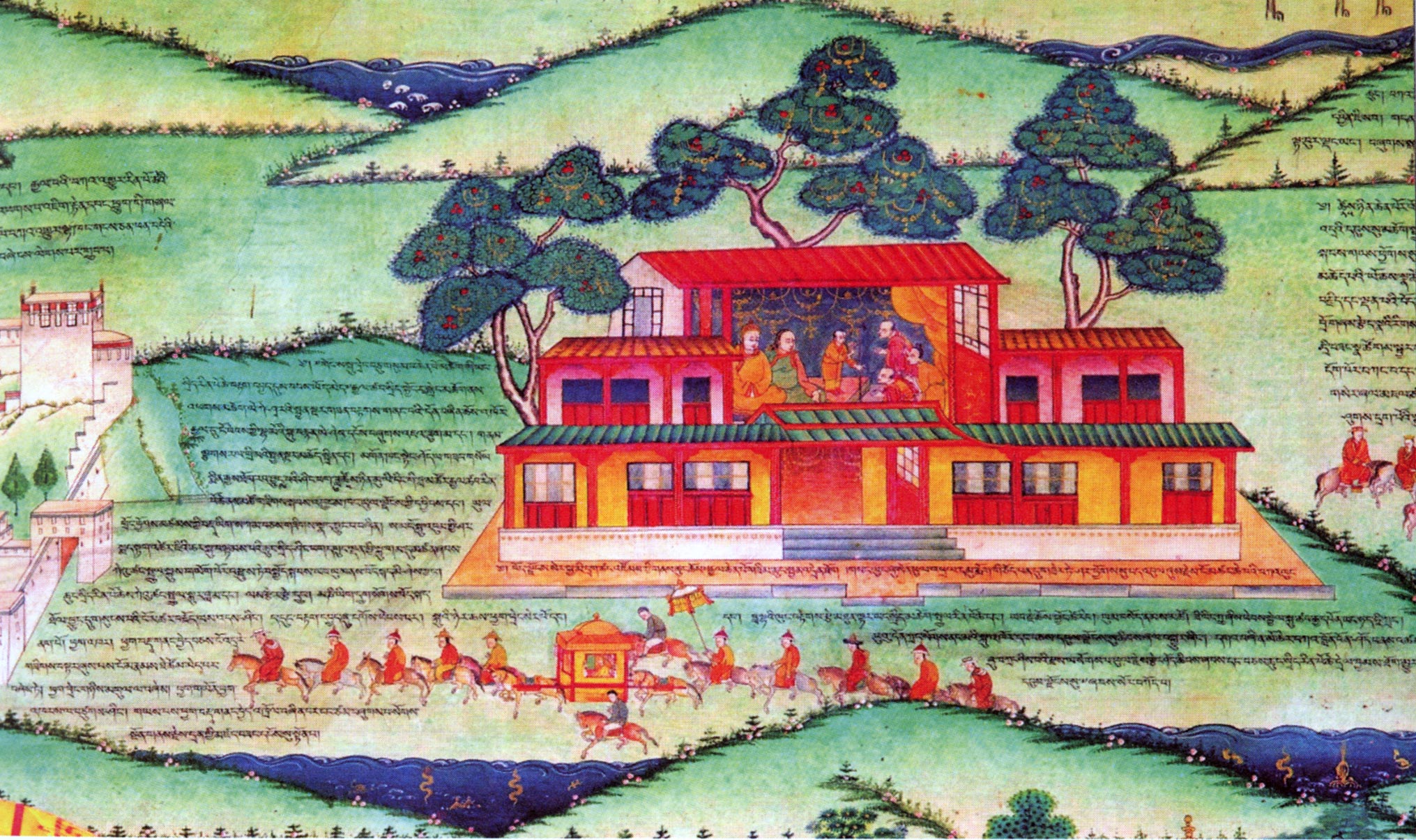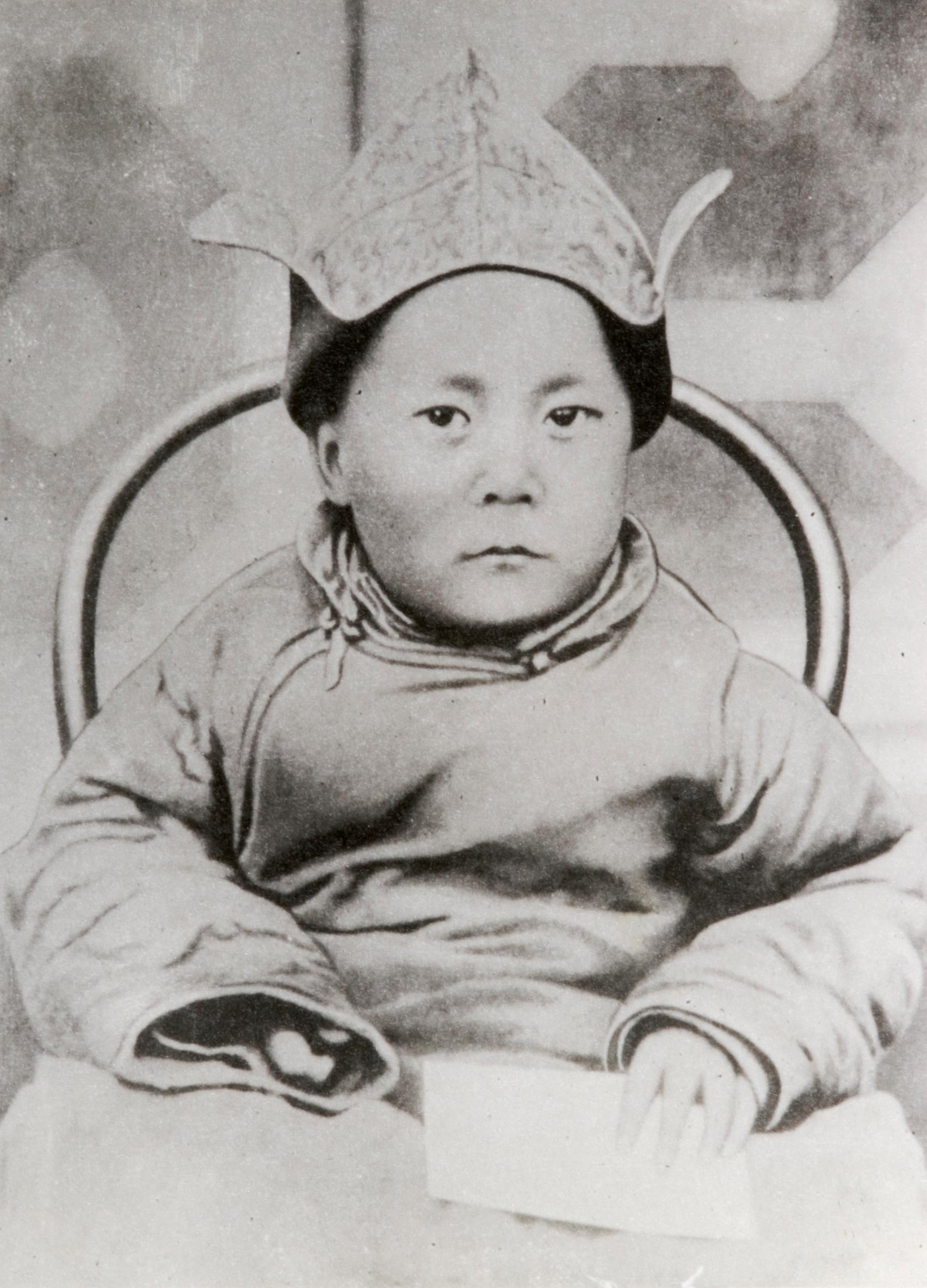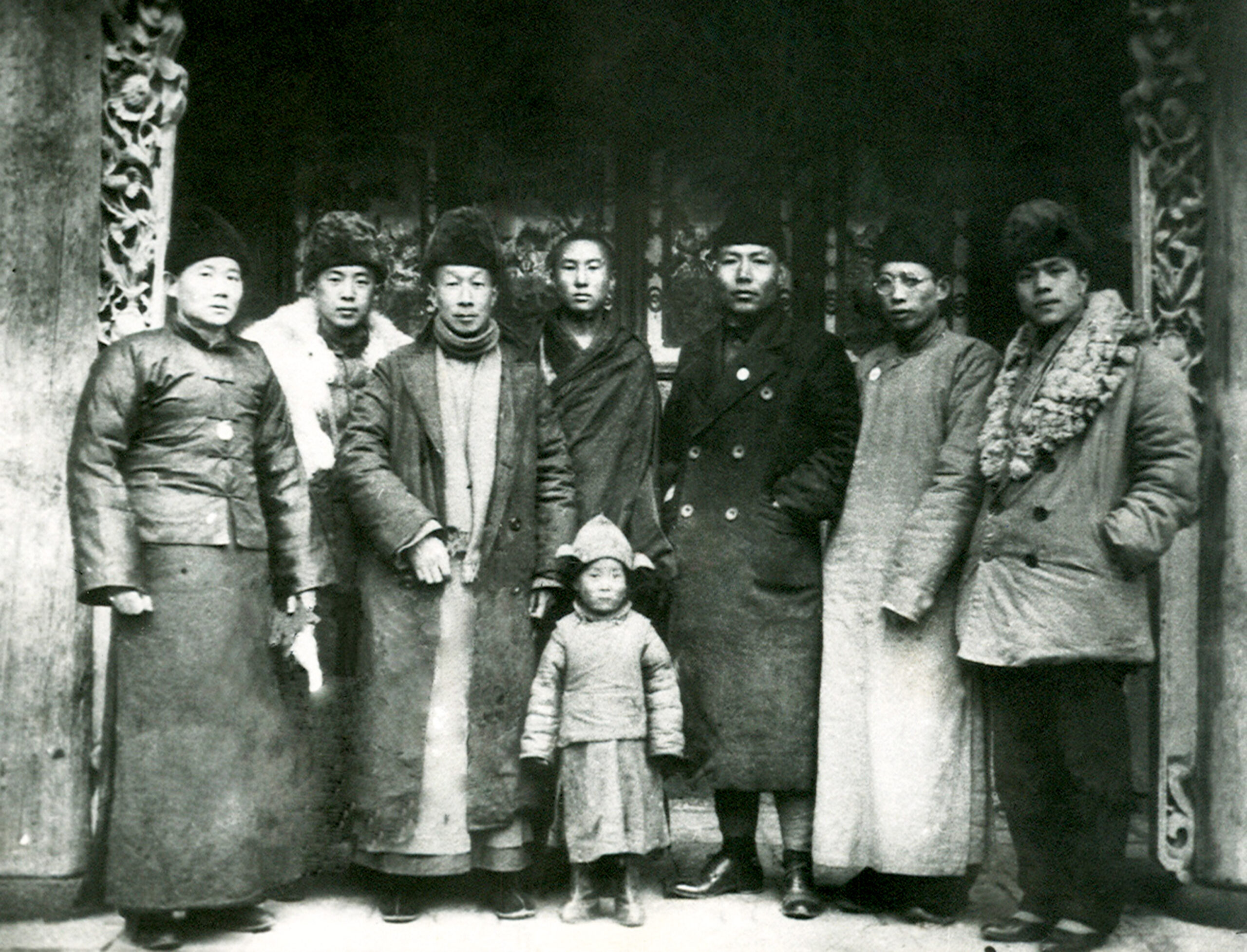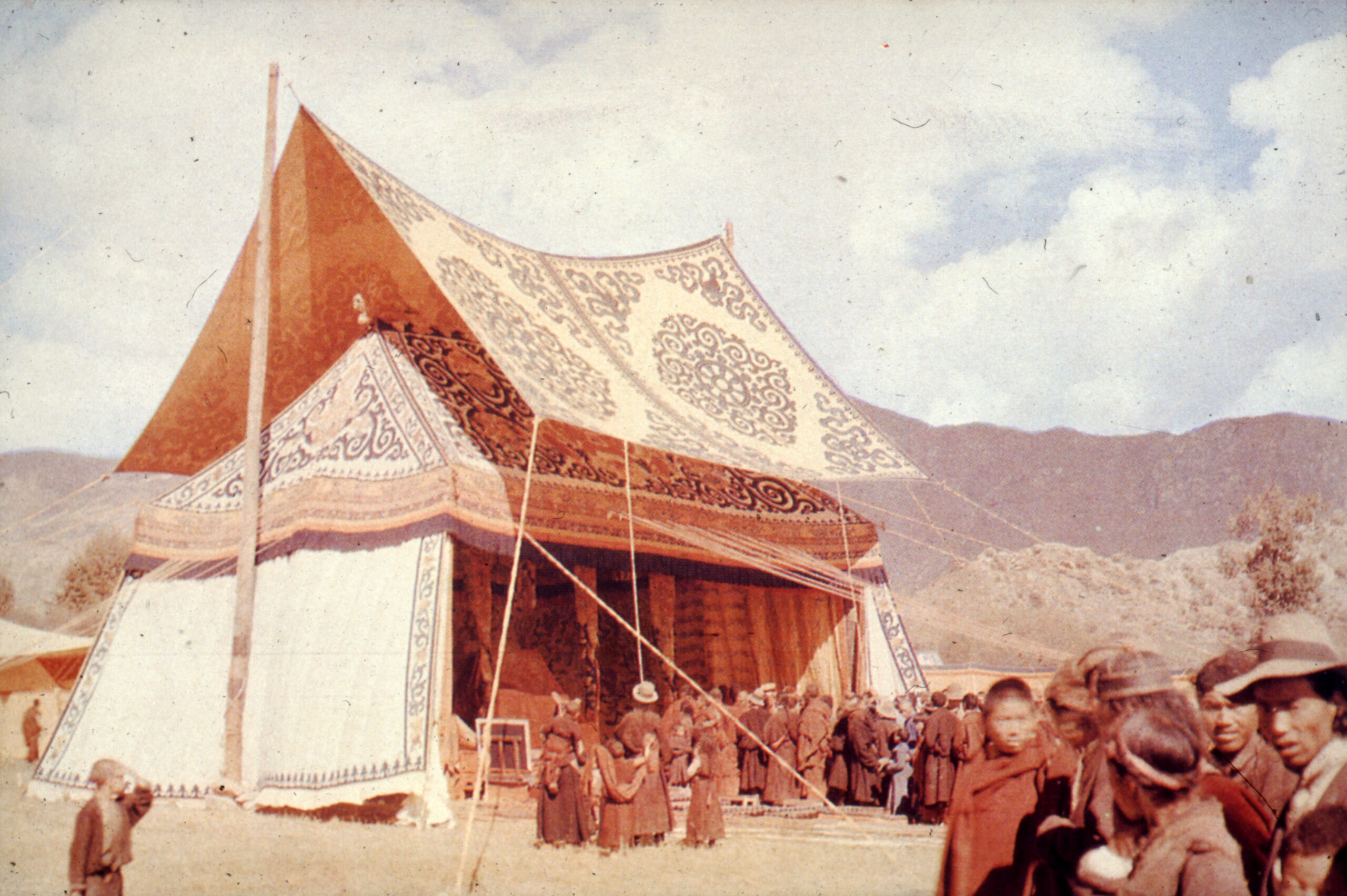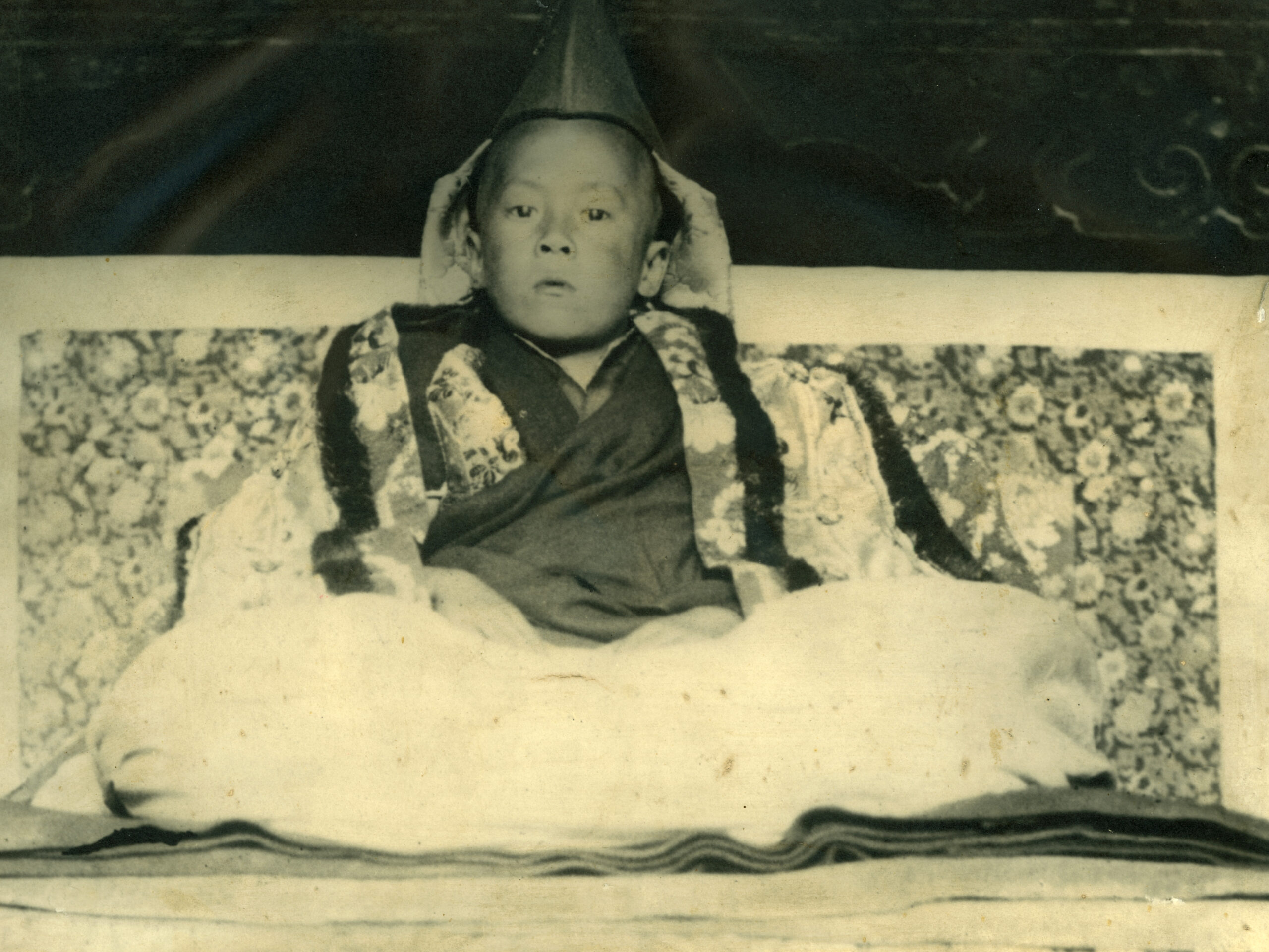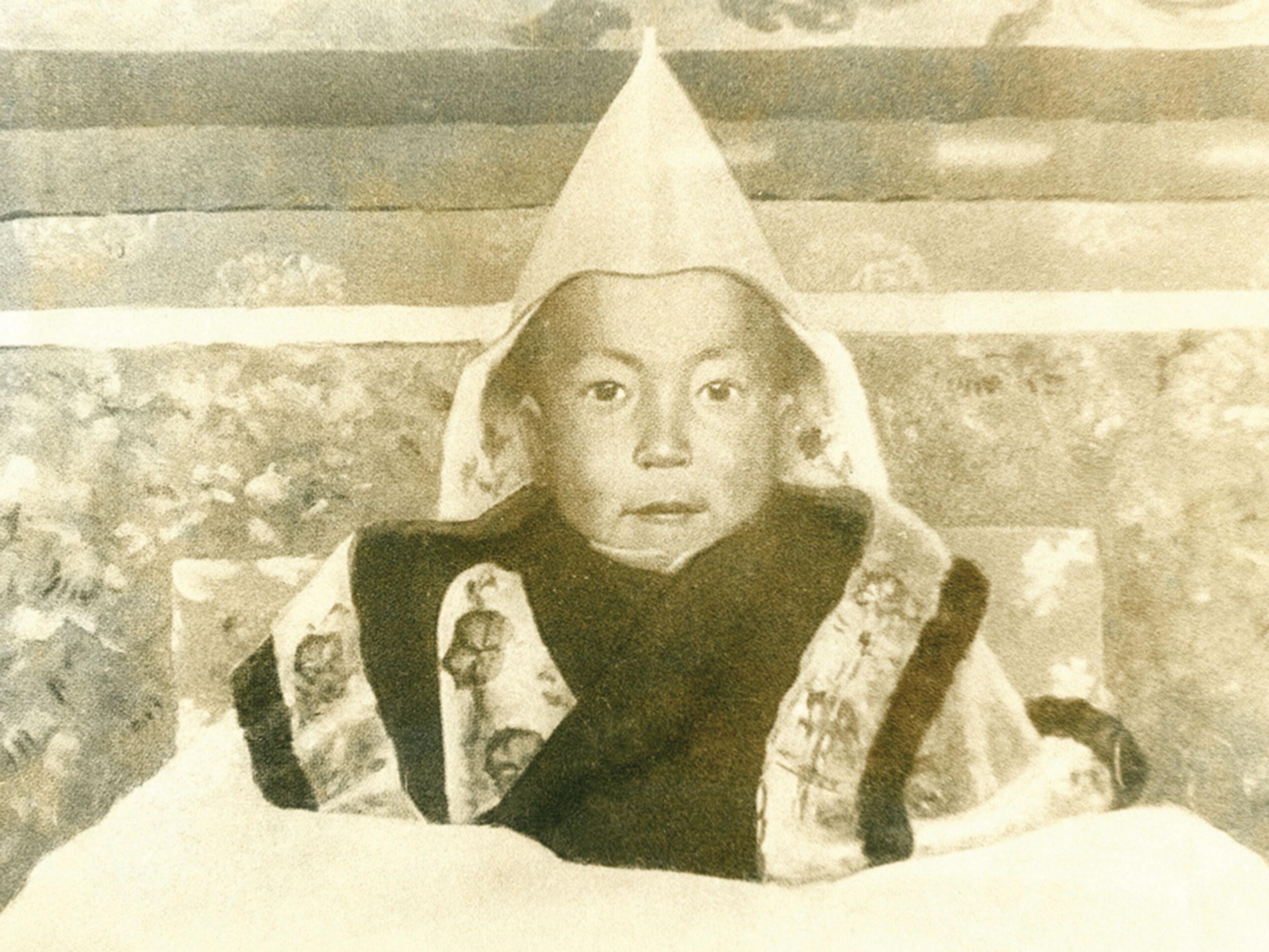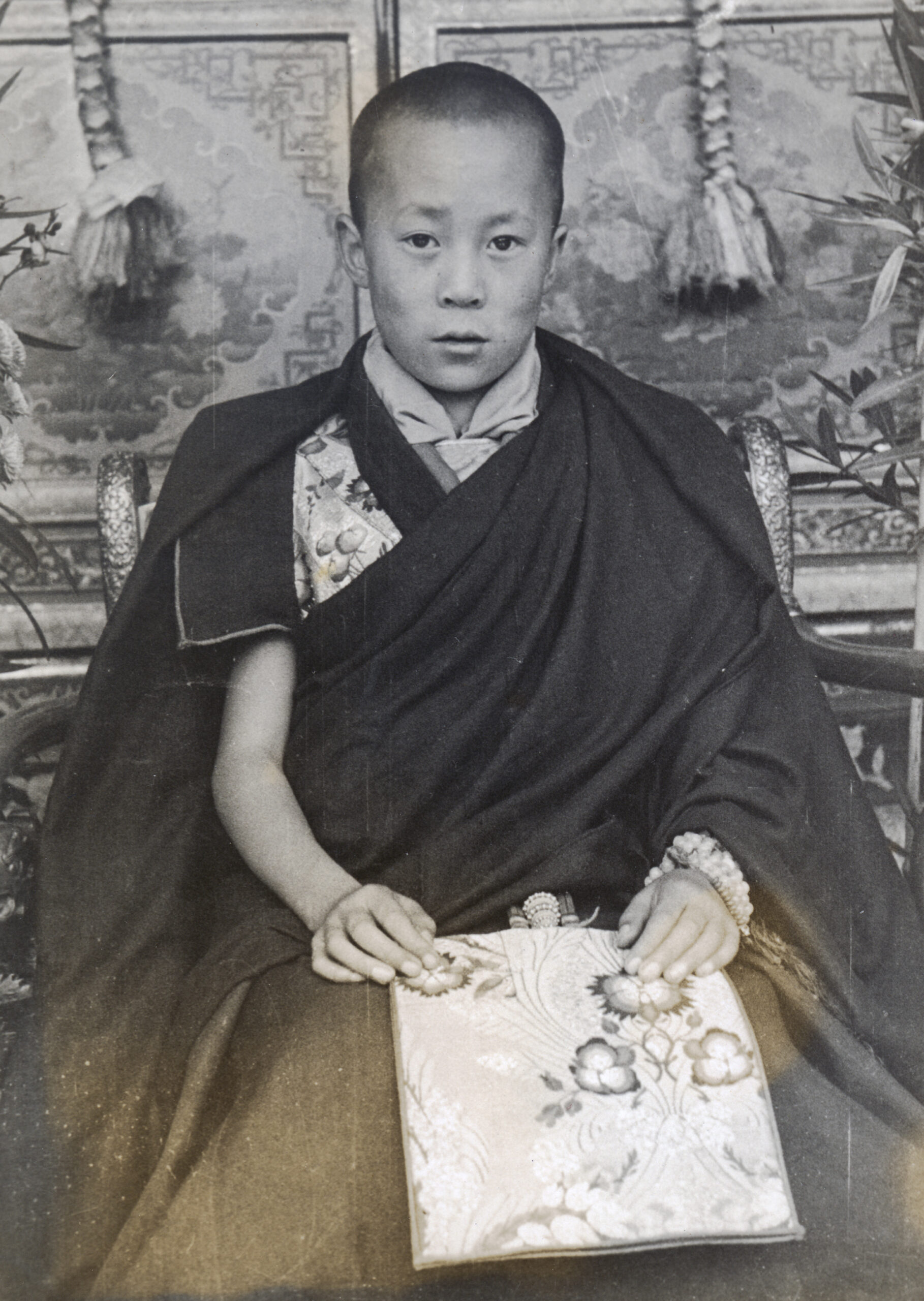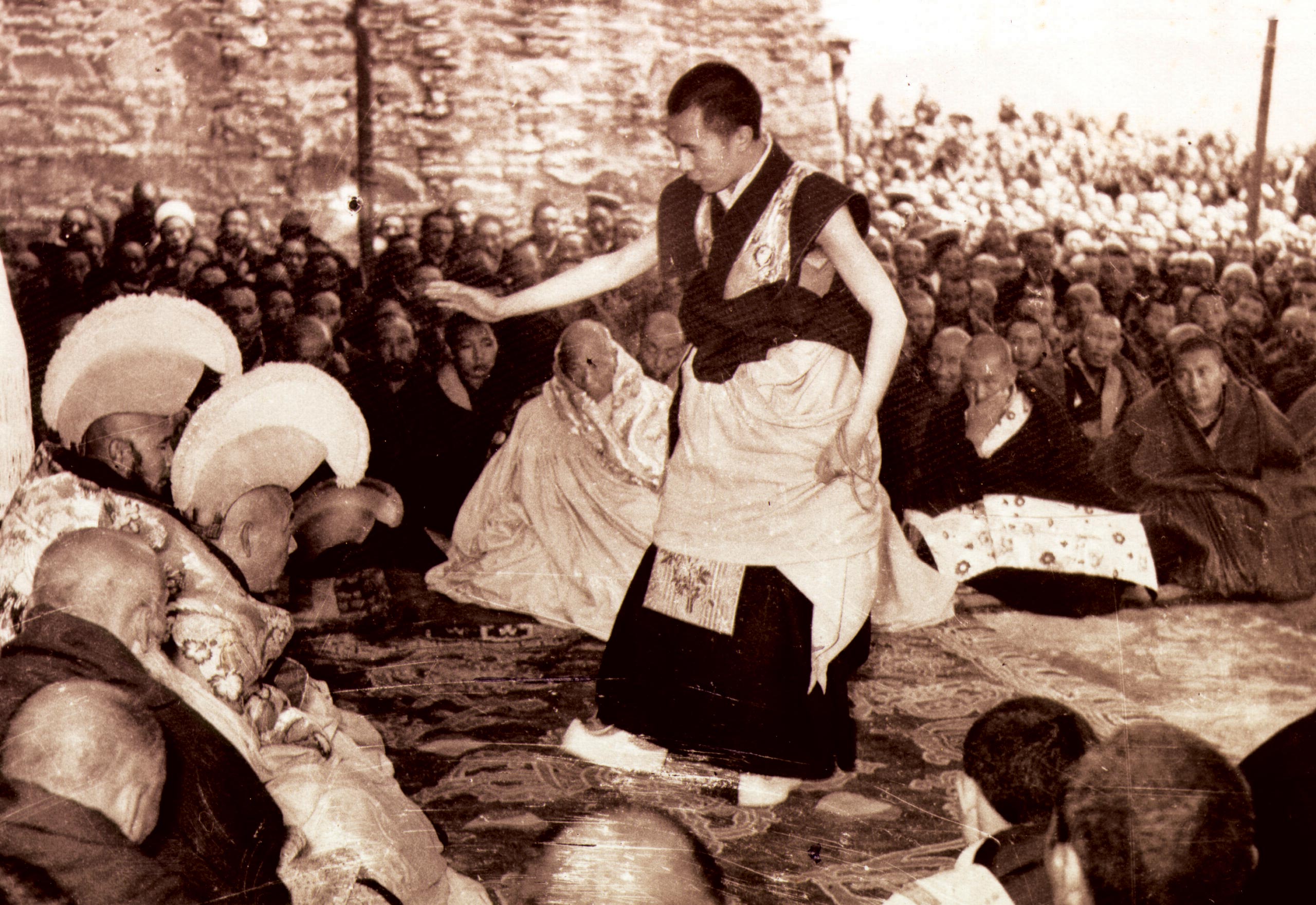
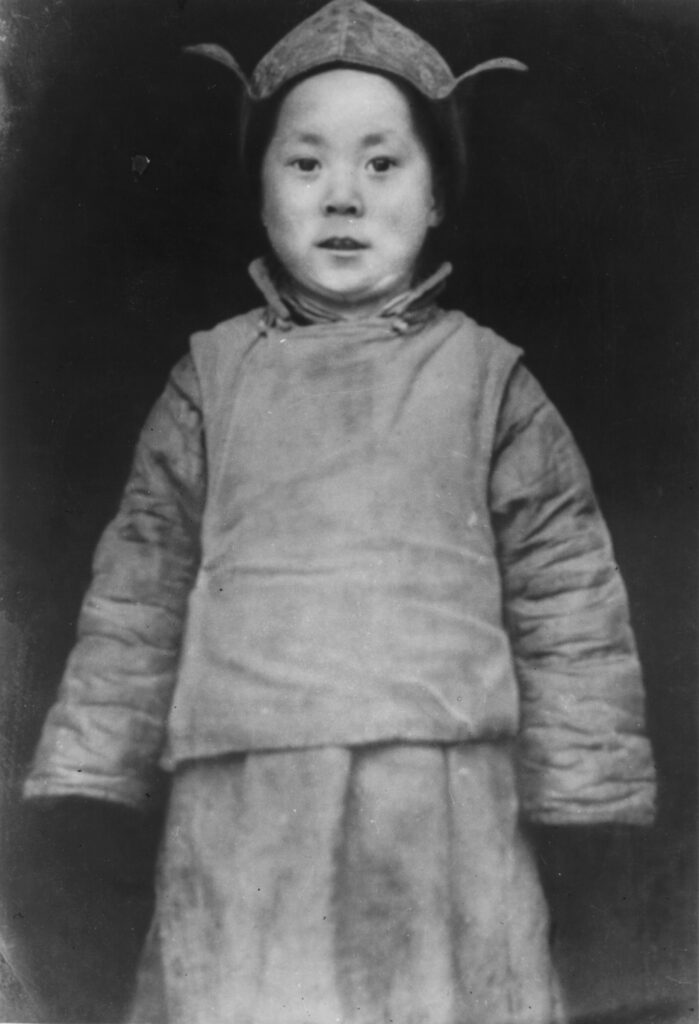
Early Life and Recognition
His Holiness the 14th Dalai Lama, born Lhamo Thondup, was born on 6 July 1935 in the remote village of Taktser in Amdo, northeastern Tibet. He was the fifth of seven surviving children born to a farming family—Choekyong Tsering and Deki Tsering.
Following the death of the 13th Dalai Lama in 1933, Reting Rinpoche, at the age of 24, was appointed Regent of Tibet. One of his primary responsibilities was to identify the reincarnation of the Dalai Lama. In keeping with tradition, Regent Reting and Kalon Trimon journeyed to the sacred lake of Lhamo Lhatso in April 1935. Located near Chokhorgyal Monastery, around ninety miles southeast of Lhasa, the lake is revered for offering prophetic visions. After days of prayer and meditation, the Regent reported seeing three Tibetan letters—Ah, Ka, and Ma—along with the image of a monastery with jade-green and golden roofs, and a house with turquoise tiles. The vision was interpreted as pointing to Amdo (Ah), Kumbum Monastery (Ka), and Karma Rolpai Dorjee Monastery (Ka and Ma), which had ties to the 13th Dalai Lama.
Subsequently, three search parties were dispatched across eastern Tibet. One, led by Kewtsang Rinpoche of Sera Monastery, performed traditional tests and rituals and identified the two-year-old Lhamo Thondup of Taktser as the unmistakable reincarnation. He was taken to Kumbum Monastery to await travel to Lhasa. However, the local Chinese warlord Ma Bufang delayed his departure, demanding a large ransom. After 18 months, and upon payment in July 1939, the young boy and his family embarked on a journey to Lhasa that lasted over three months.
Lhamo Thondup was formally enthroned at the Potala Palace on 22 February 1940, receiving the name Jetsun Jamphel Ngawang Lobsang Yeshe Tenzin Gyatso (Holy Lord, Gentle Glory, Eloquent, Compassionate, Learned Defender of the Faith, Ocean of Wisdom).
At age six, he began monastic studies under tutors including Regent Reting Rinpoche, Taktra Rinpoche, and Ling Rinpoche. He later received full monastic ordination from Ling Rinpoche. At 24, he earned the Geshe Lharampa degree—the highest honor in Tibetan Buddhist scholastic tradition.
